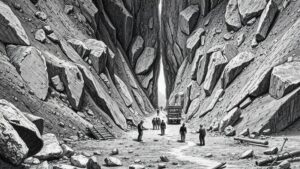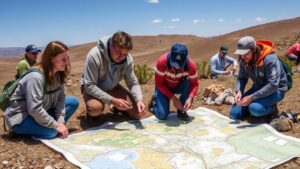The Story of Montana’s Last Chance Gulch: A Rich Gold Discovery
The Story of Montana’s Last Chance Gulch: A Rich Gold Discovery
Last Chance Gulch stands as a testament to the fervor of the Gold Rush era, marking a pivotal moment in Montana’s history. This rich discovery catalyzed a population surge and spurred economic growth, ultimately leading to the establishment of Helena, the capital city of Montana. The significance of Last Chance Gulch extends beyond mere geology; it encompasses the transformative impact of gold mining on the region and its communities.
A Historical Overview
Last Chance Gulch was discovered in 1864 by three prospectors–Thomas “Tom” Smith, John “Rough” Smith, and Ed McMahon. prospectors stumbled upon what would become one of the richest gold strikes in Montana, initially known for its modest output but ultimately yielding substantial wealth over the ensuing years. By 1865, the area was bustling with miners and merchants aiming to capitalize on the newfound wealth.
The Geographic Context
Located in the Helena Valley, Last Chance Gulch is characterized by its mountainous terrain. The gulch itself is a natural ravine where erosion and geological processes exposed gold-containing quartz veins. surrounding soft rock made it easier for miners to extract gold, resulting in efficient operations and a thriving economy.
The discovery of gold in Last Chance Gulch led to a population explosion in the region. By the late 1860s, Helena had emerged as a prominent mining town. It went from a deserted landscape to a bustling community with amenities and services to support the influx of miners and their families. This rapid population growth had several ramifications:
- Establishment of businesses catering to miners, such as saloons, hotels, and general stores.
- Increased demand for infrastructure, including roads, schools, and law enforcement.
- Growth of diverse communities as immigrants from various backgrounds came together in search of fortune.
The Gold Mining Process
The mining methods employed during this period varied widely, from panning in the early days to more sophisticated techniques like hydraulic mining and hard rock mining. Hydraulic mining, introduced in the 1870s, employed high-pressure water jets to dislodge gravel and expose gold deposits. This innovative method dramatically increased productivity but also raised environmental concerns over soil erosion and water pollution.
Real-World Applications and Legacy
The legacy of Last Chance Gulch is evident in contemporary Montana, where mining has influenced not just the economy but also the culture and identity of the state. Today, Helena serves as a reminder of this heritage, featuring numerous historical sites and mining museums that attract tourists and historians alike. The mining boom established a legal and regulatory framework that continues to shape resource extraction policies in Montana.
Conclusion: Lessons Learned
Last Chance Gulch offers critical insights into the complexities of resource extraction and its broader effects on society. It serves as an example of how natural wealth can drive economic growth while also highlighting the potential challenges involved, including environmental degradation and social upheaval. Understanding this historical context provides valuable lessons for current and future discussions around mining practices and sustainable resource management in Montana and beyond.
As we look to the future, it is essential to balance the pursuit of natural resources with the responsibility of preserving the environment and fostering community resilience. The story of Last Chance Gulch remains a pivotal chapter in the American narrative–one that underscores the intersection of opportunity, ambition, and responsibility.



